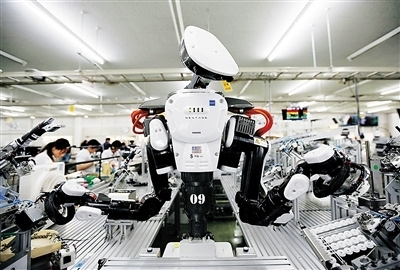Labor shortage and aging Japanese factories forced their own R&D robots?
This is the epitome of aging in Japan. According to the statistics of the Ministry of Internal Affairs and Communications of Japan, from 2010 to 2015, the population aged over 65 in Japan rose from 23.0% to 26.7%.
As the ageing period intensifies, the total population of Japan continues to decline. This has caused a major special phenomenon in Japanese society in recent years: labor shortage.
According to the latest data released by the Ministry of Health, Labour and Welfare of Japan, the effective job-seeking rate in Japan in November 2016 (the number of job-seekers per job applicant) was 1.41 times, a record high since July 1991.
Difficulties in recruiting companies have made the competition among labor forces in Japan more intensified. At the same time, it has also prompted Japanese companies to improve their management efficiency and accelerate innovation. New technologies such as robotics have been used to solve the problem of artificial shortages.

The shortage of labor is increasing
At 10:00 in the evening, many young people in the streets of Shinjuku still distribute advertisement flyers around. Each class of subway stops brings in a large number of potential customers.
Young people work hard and it is an intuitive impression of Japanese society after the burst of the bubble economy. However, this does not mean that Japan’s employment pressure is high.
According to the "Japan Statistical Yearbook 2017" released by the Ministry of General Affairs of Japan, the total unemployed in Japan has decreased from 3.34 million in 2010 to 2.22 million in 2015, and the total unemployment rate has dropped from 5.1% to 3.4%. . Correspondingly, the effective rate of general demand increase from 0.52 in 2010 to 1.20 in 2015, which means that the number of jobs per job seeker has more than doubled, and the number of jobs has exceeded the number of candidates.
"(Osaka) companies face shortages of manpower, and Tokyo is the same," said Fujimoto Koichi, head of regional economic strategy at the Planning Division of Osaka's Economic and Strategic Bureau. In serious cases, there are even only two job candidates for two job positions.
Behind the labor shortage, apart from the increase in employment opportunities brought about by Japan’s economic recovery in recent years, there is also an important factor that the aging of Japan’s society is becoming increasingly serious under low fertility rates.
Ebike Battery,Electric Scooter Battery,48V Electric Bike Battery,Batteries For Electric Bike
Zhejiang Baishili Battery Technology Service Co,.Ltd. , https://www.bslbatteryservice.com
